(Saraqeb, Syria)—The walls of the city of Saraqeb in Idlib province reflect the reality of the Syrian situation in all its iterations over the past three years. After the outbreak of the protests, government forces stormed the city in March 2011, and the security crackdown escalated the summer of that same year, with military opposition forces beginning to organize that September. The battles escalated between the Free Syrian Army (FSA) and the regime so that by November 2012, the city was almost totally free of government control.
But the situation did not remain stable for civilians: dozens were killed in what became known as “Black Tuesday,” when government forces heavily bombarded the city on September 8, 2013.
After that, the Islamic organizations came out of the woodwork, with the Nusra Front first claiming control over the city. It was followed by the Islamic State of Iraq and Syria (ISIS), which was subsequently defeated and driven out after confrontations with the Saraqeb Rebels’ Front and the Syrian Rebels Front in January 2014.
Each of these developments remain documented in writing on Saraqeb’s walls, as captured by the lens of Damascus Bureau correspondent Aref Haj Youssef, who took these photos on March 13, 2014, ahead of the three year anniversary of the beginning of the protests against the regime in Damascus and Daraa.

The walls of most Syrian cities are still not free of portraits of the Assads—both father and son.
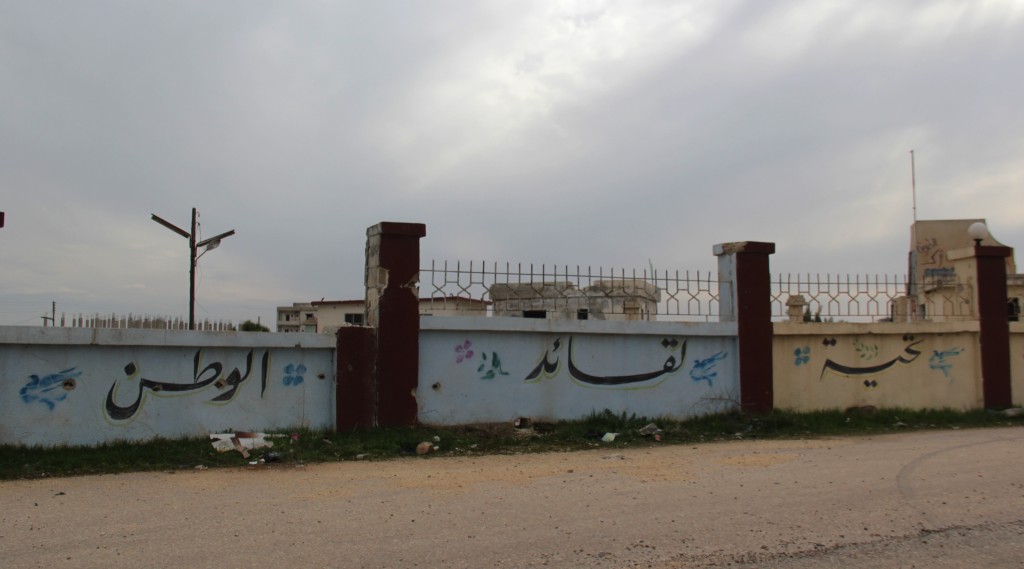
Greetings and tributes to “the leader of the nation,” like this one, were consistently boasted for over 40 years.
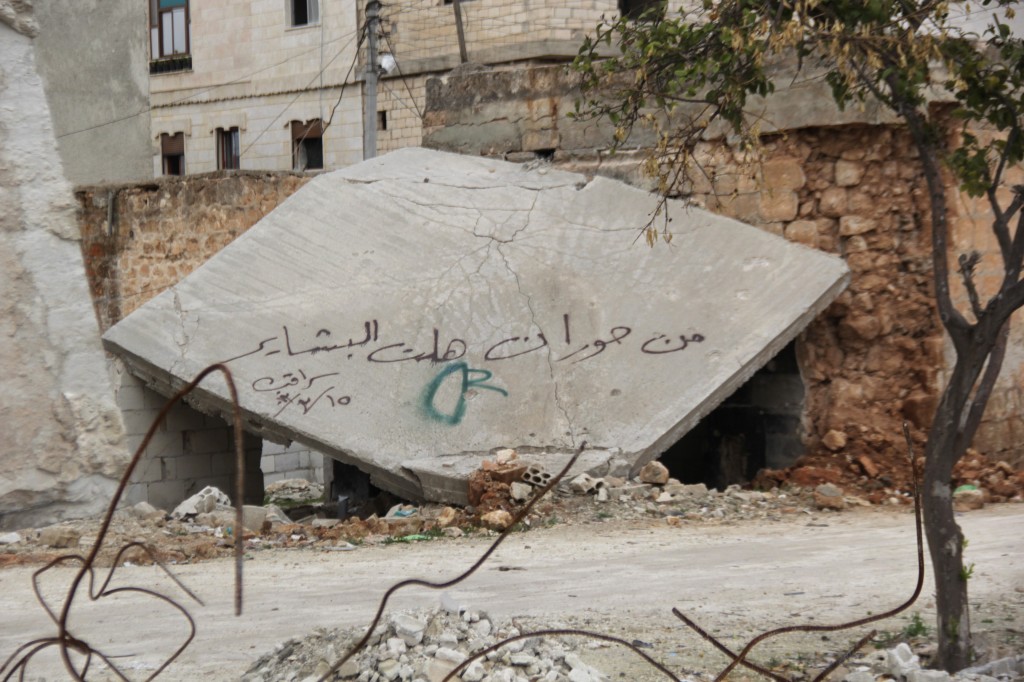
“Horan heralded the revolution” -- a tribute to Daraa province, where massive protests started on March 18, 2011 after its youth scrawled their dissatisfaction with the regime on the walls of Daraa city.
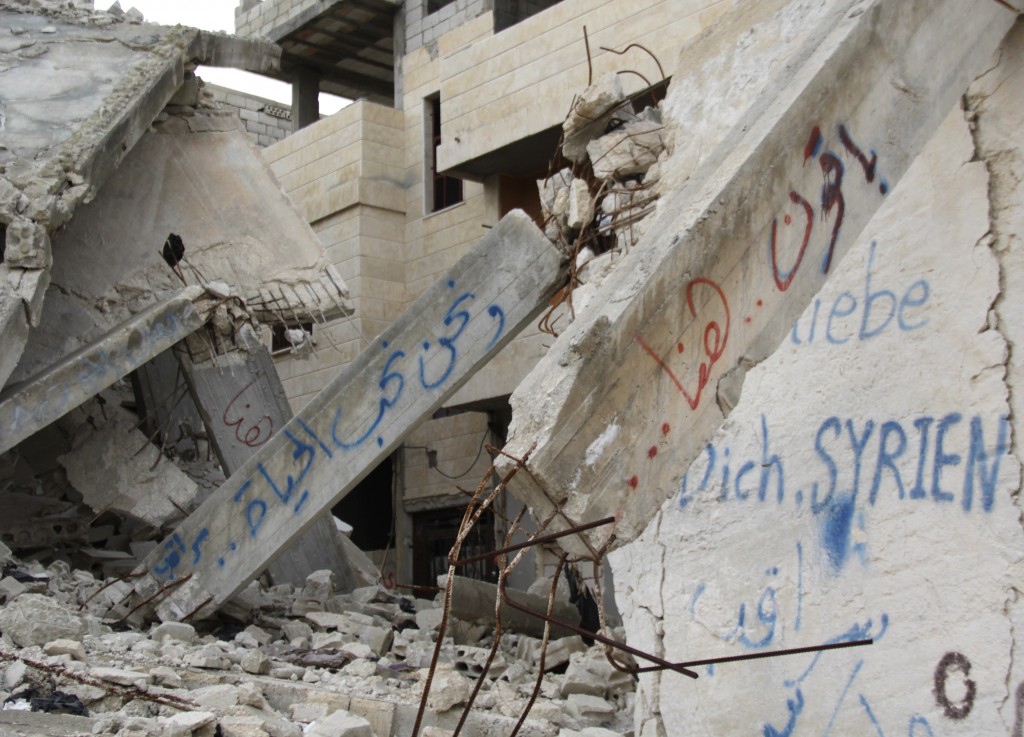
Life-affirming slogans written on the ruins of walls destroyed after aerial bombardment: “We love life. We shall remain here.”
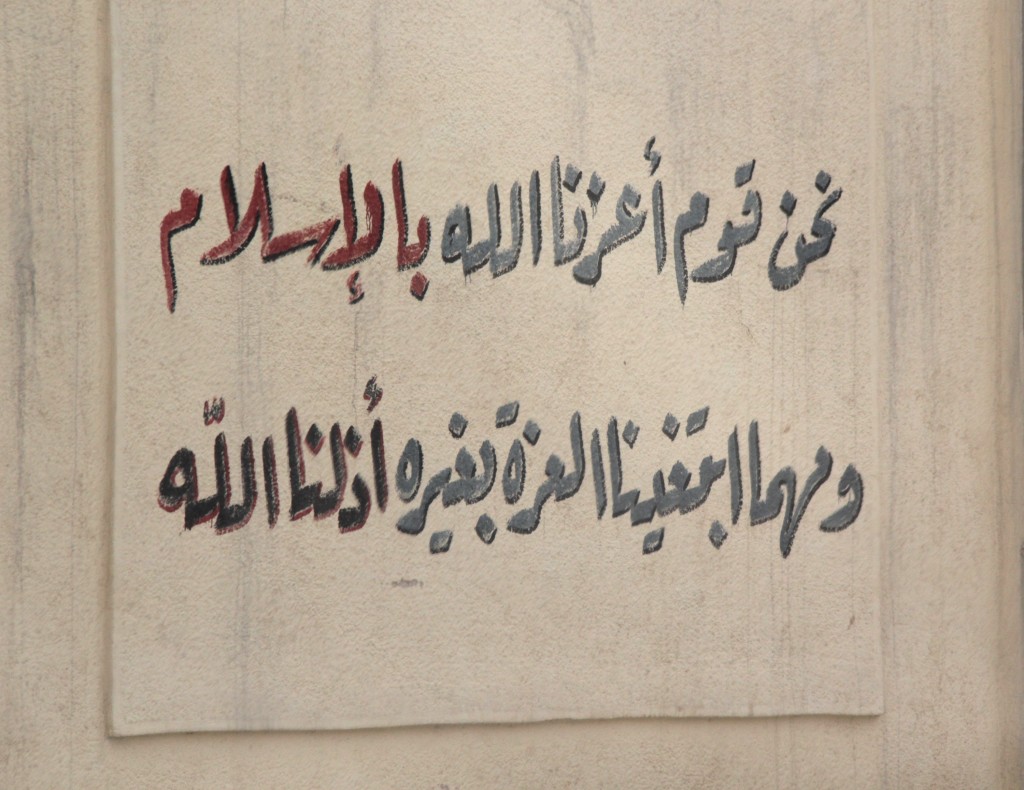
A saying by the companion of the Prophet, Omar bin al-Khattab, finds its own place on the walls: “We are a nation honoured by God with Islam. If we seek pride otherwise, God shall humiliate us.”
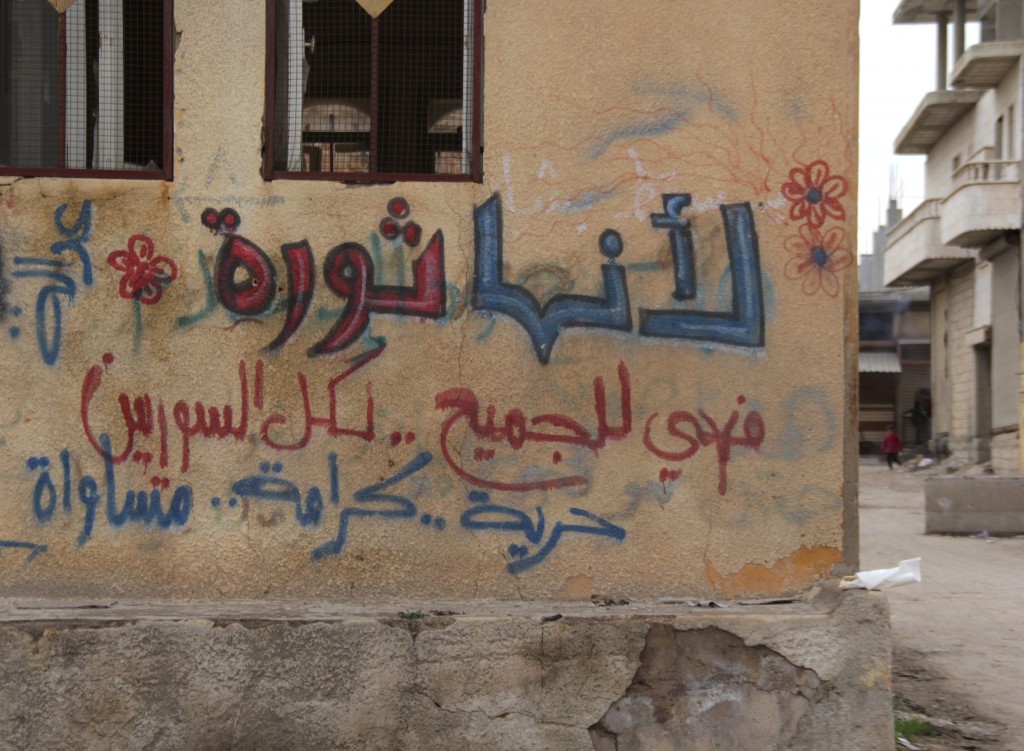
Civilian activists had other ideas about the nature of the revolution: “It’s a revolution for everyone… all Syrians. Freedom, dignity and equality.”
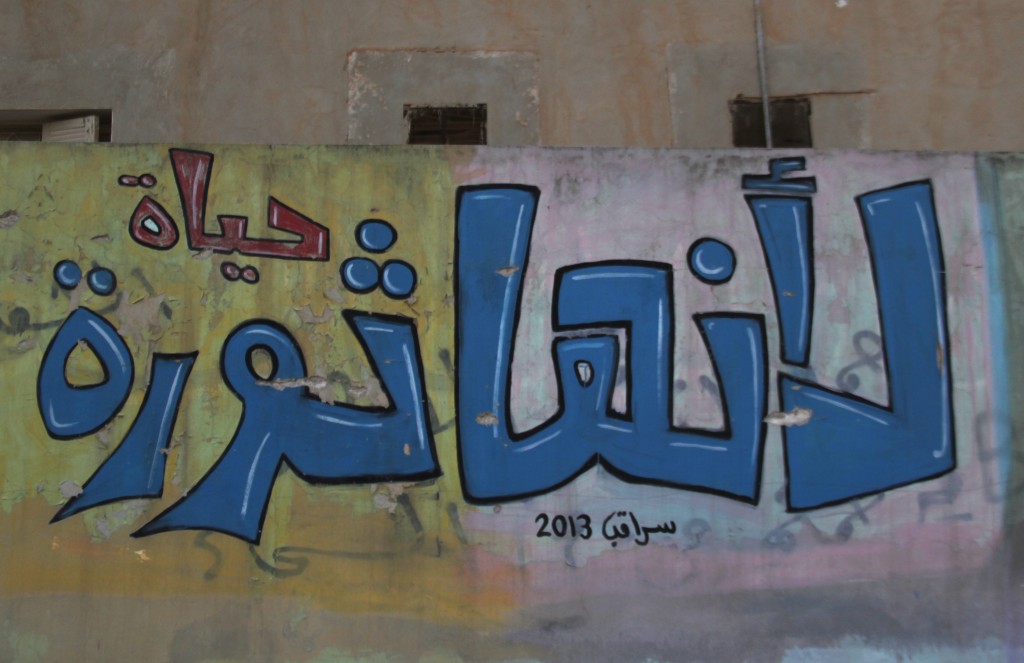
Despite all the death across Syria, the writer of this slogan expressed his desire for life: “Life, because it’s a revolution.”
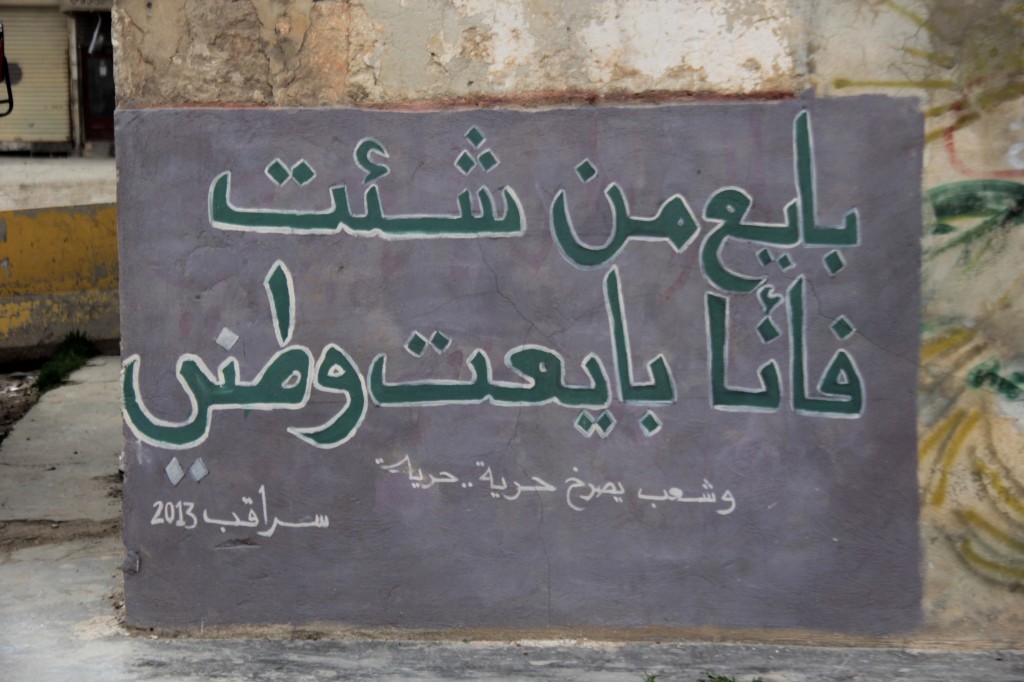
Despite all the death across Syria, the writer of this slogan expressed his desire for life: “Life, because it’s a revolution.”
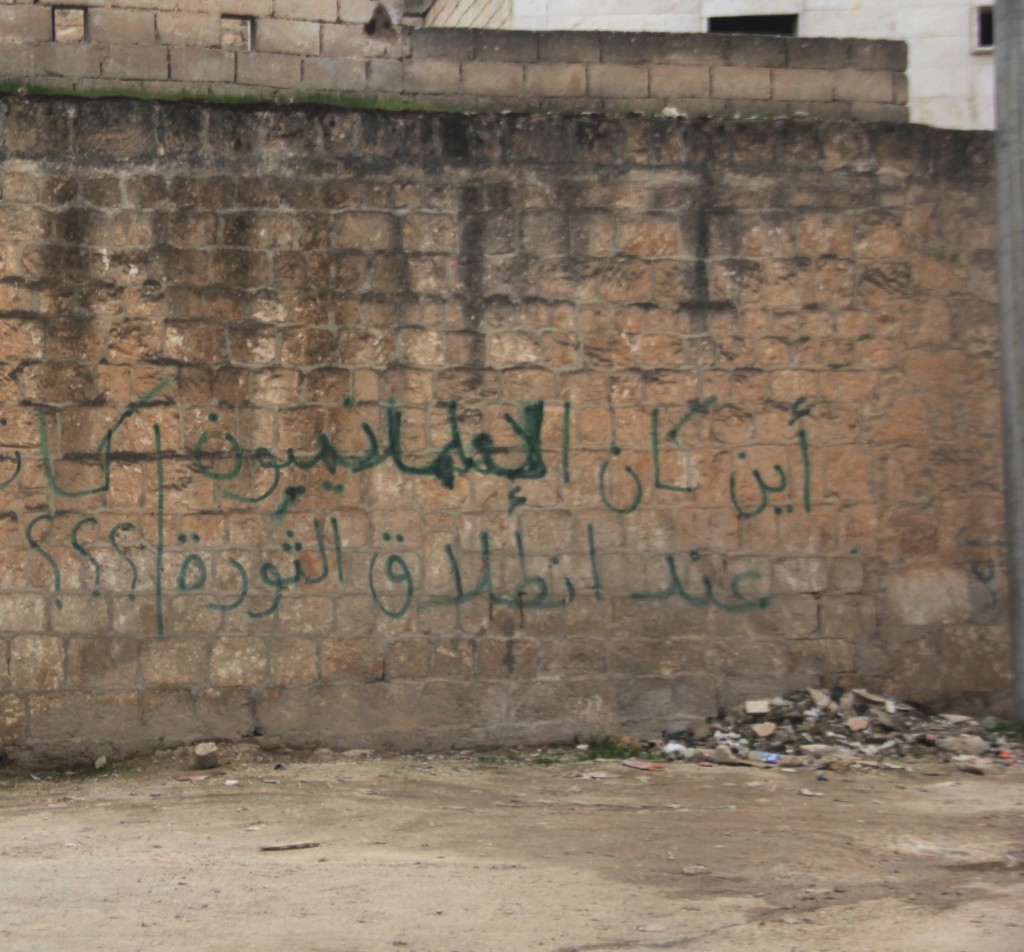
While pledges of allegiance to different Islamic organizations proliferated, this writer had another sort of pledge in mind: “Pledge allegiance to whomever you want. I have pledged allegiance to my homeland.”
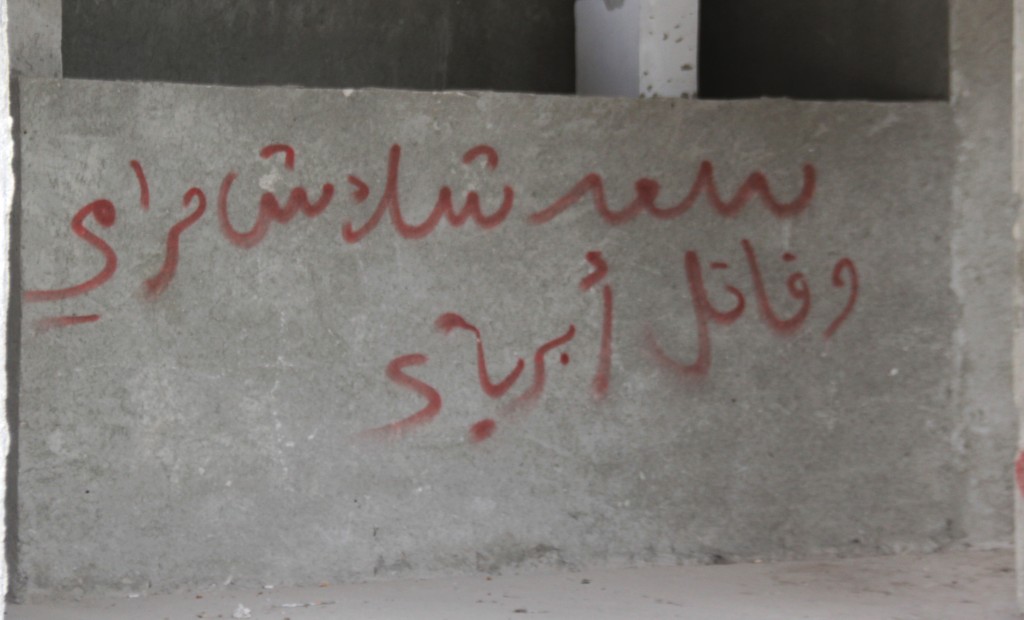
One wrote: “Where were the Islamists when the revolution began?” and another answered by replacing the word “Islamists” with “secularists.”

During their time in the city, a member of ISIS expressed the organization’s solidarity with the people of Saraqeb: “Your blood is our blood.”
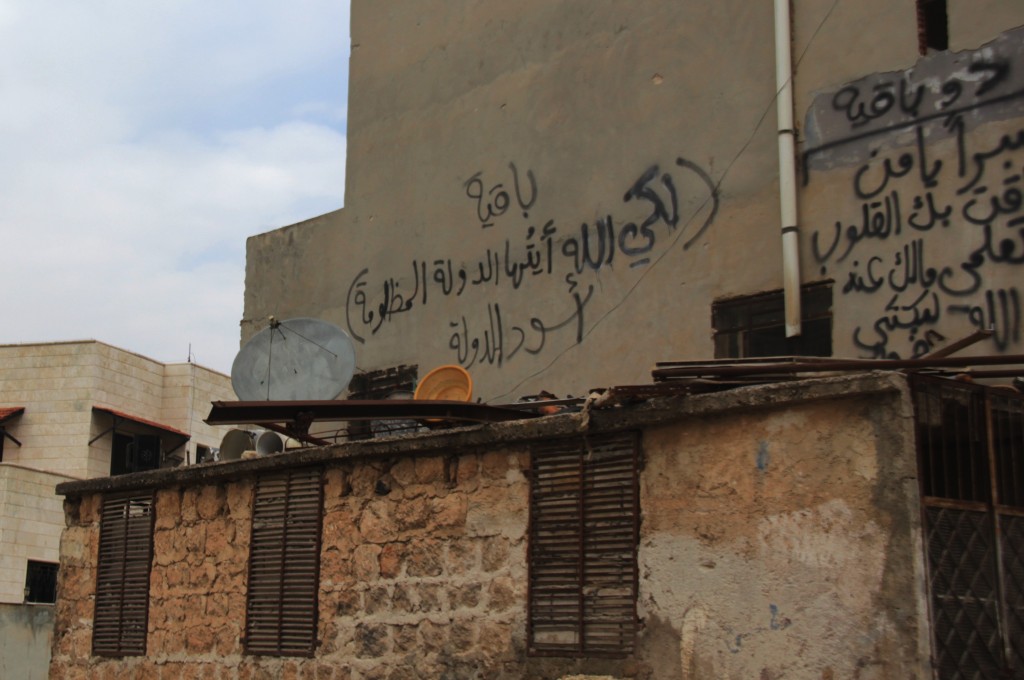
Before being ousted from Saraqeb, ISIS forces scrawled their slogan on the city walls: “We Remain.”
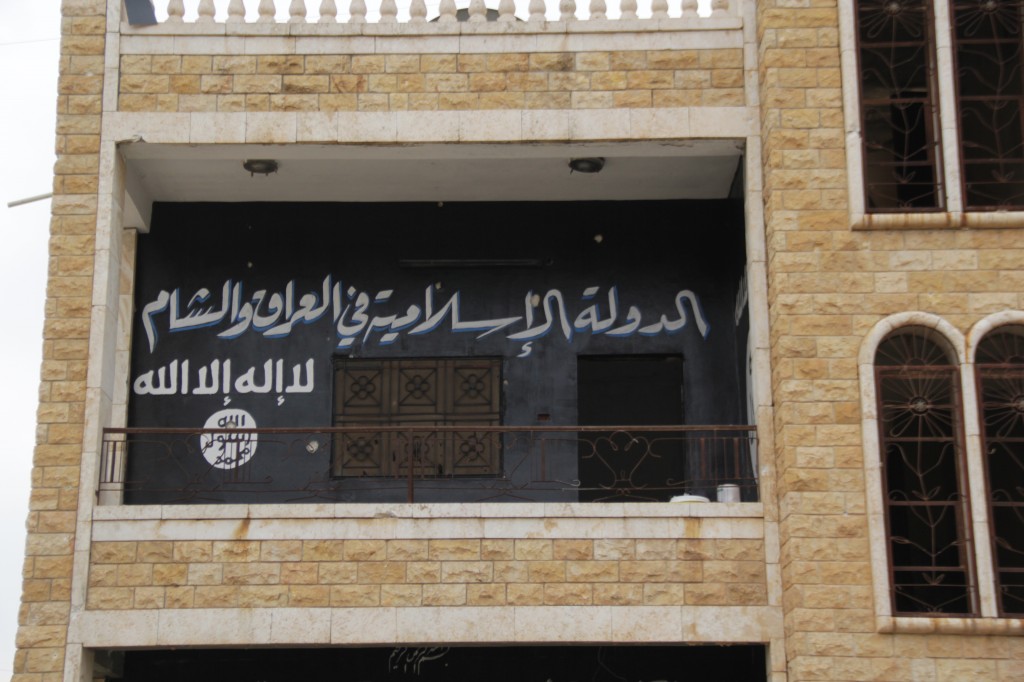
Here, what remains is a sign indicating one of ISIS’s headquarters.
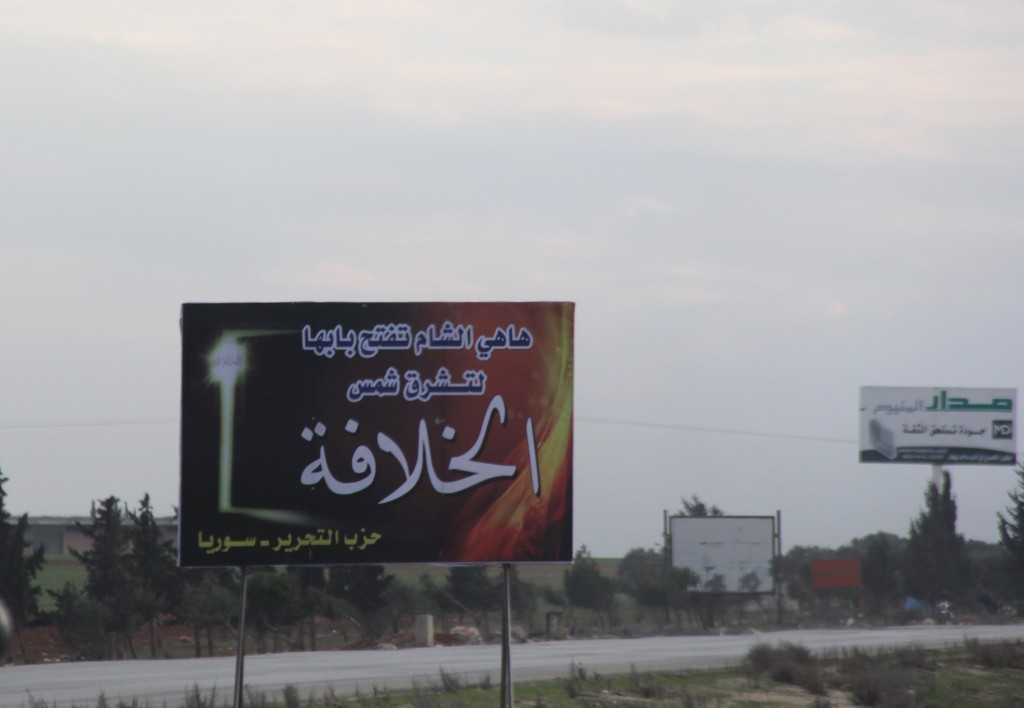
Hizb al-Tahreer, which seeks a return to the caliphate across the whole Islamic world, publicly promotes its vision: “Syria has opened its door for the sun of the caliphate to rise.”
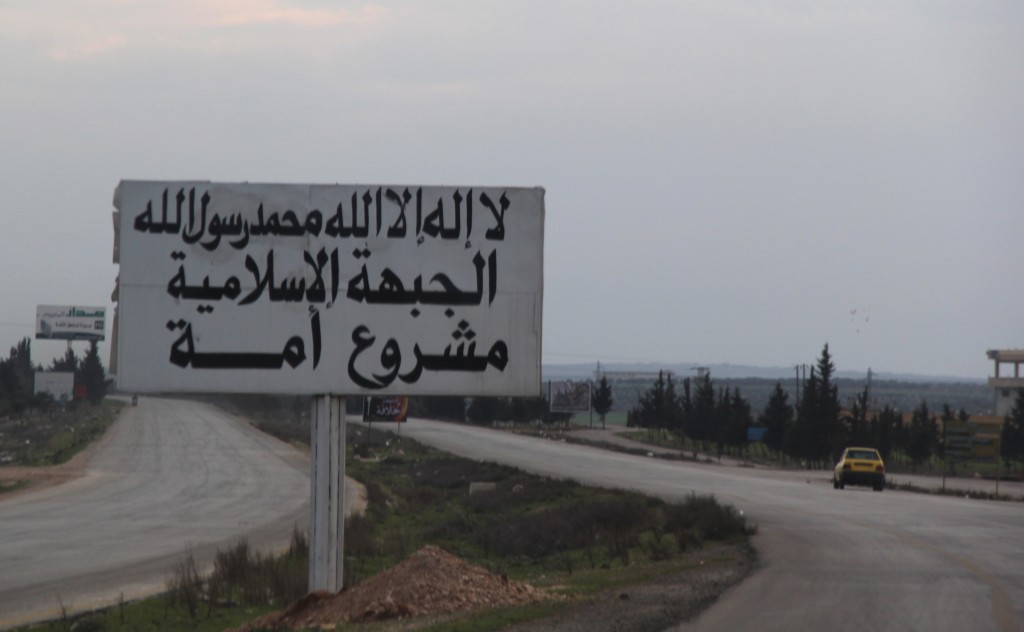
After ISIS was defeated, the Islamic Front also laid public claim to its plans: “Instating a nation.”


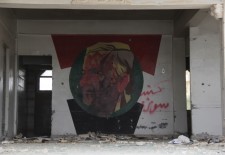

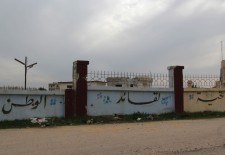

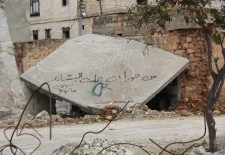

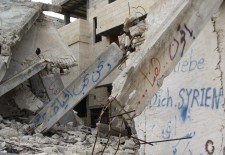





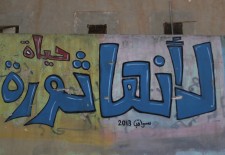





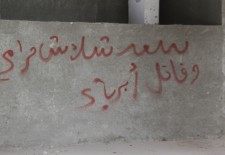

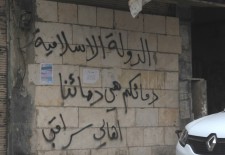



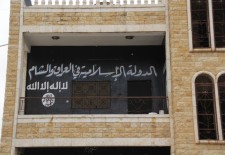



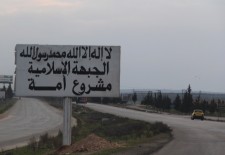

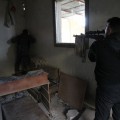

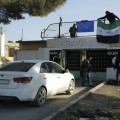


Social